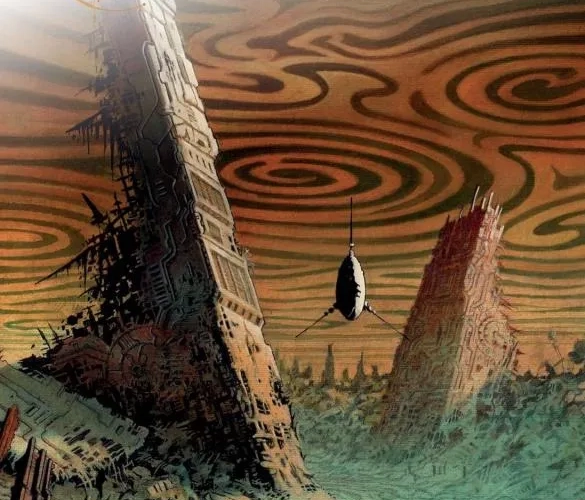Fifteenth and final volume of the series The Futures of Liu Cixin, The Time Migrants offers us a story of time travel alongside a reflection on humanity, its ability to learn from its mistakes, and the possibility that, across eras, humans can still understand one another. Scripted by Sylvain Runberg and illustrated by Serge Pellé, this volume brilliantly concludes an immersion into the universe of the most talented Chinese science fiction author.
The Migrants’ Ark
The Earth, plagued by pollution and overpopulation, is on the verge of collapse. Scarce resources and the last arable lands are being consumed. Humanity seems on the path to extinction. In a final desperate attempt, the major powers launch "The Time Migrants" operation. Eighty million voluntary and selected individuals are cryogenized. Should humanity face extinction, they will bear the responsibility of reviving the species.
Wu Feng has been appointed as the temporal ambassador. Assisted by a temporal council, he is tasked with evaluating if the chosen time period is suitable for the temporal travelers' settlement and negotiating with the future's humans. However, as the ark consumes vast amounts of energy, the temporal council can only afford four system awakenings. They must carefully determine how far into the future they should go. The first checkpoint has been set a century after the mission's launch.

Key moment: The cryogenic ark awakens as temporal calculations begin. The humanity of the future awaits.
The Time Migrants in an Interstellar Mode
The narrative places us in a setting of a civilization programmed for collapse. The great metropolises still resist, but Earth resembles the grim visions of cyberpunk tales. Technology fails to heal the scars of decades of pollution and excess. Humanity is a species on borrowed time, and while engineers search for solutions to avert the fall into the abyss, others have already envisioned the worst.
The time migrants carry within them the hope of a fresh start. They have been chosen for their youth, brilliance, and awareness of the fact that this is a one-way journey. Some leave behind spouses, children, and families for a hypothetical promise. Nothing guarantees they will be well-received. In the eyes of their descendants, won't they appear as strangers on their own land or as the ones responsible for a disastrous future?

Key moment: Farewells before cryogenic preservation, emphasizing the emotional toll of the mission.
Visions of the Future
The Time Migrants plunges us into a vast philosophical and initiatory quest. The first question posed by the team in charge of the project is: when to stop? Is a century too "early"? The Earth will still bear the scars of our wars and excesses. If humans still exist, won't they see these travelers as responsible for this planetary destruction (as in the movie Tenet)? They might even demand accountability.
The second question concerns humanity's evolution over centuries and millennia to come. Barbarism, transhumanism, exodus—the narrative explores possible futures with both hope and despair. Can human nature fundamentally change? Can it welcome these visitors from the past, reflections of another world and way of thinking? Or will these migrants be seen as barbarians or even a threat that must be eradicated? These are the questions driving the temporal council, torn between seeking the best possible future and limiting the number of stops.

Key moment: The first encounter between time migrants and their distant descendants, filled with uncertainty and hope.
The Time Migrants: A New Beginning
The entire narrative revolves around this question: to live or to survive? Each period forces the temporal castaways to reflect on the future they wish to build. It is not just about their own lives but also those of their descendants. They carry a heavy burden: that of "rebooting" humanity. The dilemmas are immense—choosing the right land, cohabiting with their descendants, blending with them, and adopting their customs. The choice of a minimalist art style intensifies the suspense and constant dilemmas faced by the protagonists.
Between the humans of the past and those of the future, one question runs through the entire album: what lessons can we learn from one another? It's difficult for the migrants to preach to those who are paying the price for the inconsistency of their ancestors. Yet, to avoid repeating the mistakes of the past, the humans of the future must also learn from those who risked everything to give humanity a second chance. The album's ending, paying homage to the 1968 film Planet of the Apes, delivers an astonishing conclusion filled with hope and dreams.
This ultimate opus ideally concludes this sci-fi anthology series available from Delcourt Editions.




Comments (0)